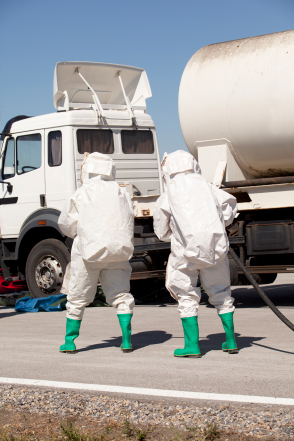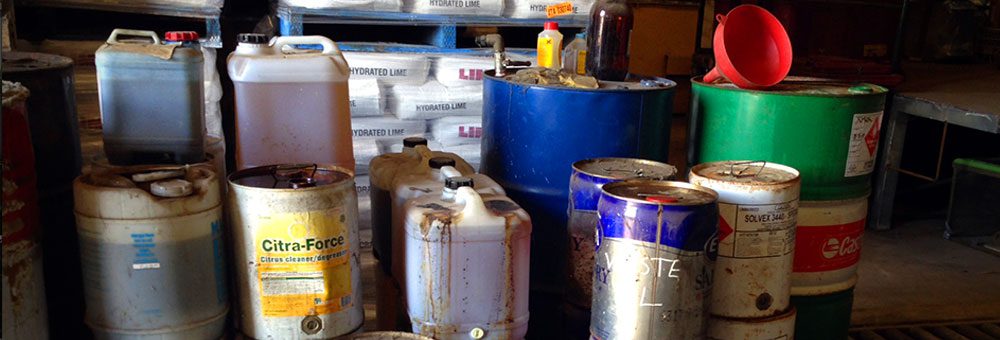Safe and Sustainable Liquid Waste Disposal: Your Go-To Company
Safe and Sustainable Liquid Waste Disposal: Your Go-To Company
Blog Article
Exactly How Liquid Garbage Disposal Works: A Detailed Overview of Strategies and Technologies Employed

Overview of Liquid Waste Types
The complexity of fluid waste types requires a complete understanding of their features and effects for disposal. Fluid waste can extensively be categorized into several types, consisting of industrial, metropolitan, farming, and unsafe waste. Each group exhibits unique residential properties, needing particular management strategies to alleviate ecological and health and wellness dangers.
Industrial liquid waste stems from producing procedures and often has an array of pollutants, such as heavy metals, solvents, and organic substances. Local liquid waste, primarily consisting of wastewater from households and business facilities, includes raw material, nutrients, and pathogens (industrial wastewater treatment). Agricultural liquid waste, including runoff from ranches, might have fertilizers, pesticides, and pet waste, positioning risks to water top quality and environments
Dangerous fluid waste is defined by its poisoning, sensitivity, or prospective to cause damage. This category includes materials like acids, bases, and specific chemicals that necessitate rigorous handling and disposal protocols. Recognizing these diverse fluid waste kinds is important for creating reliable disposal techniques and making certain compliance with ecological regulations. Appropriate category and characterization are crucial for carrying out appropriate treatment strategies and minimizing the negative impacts on public health and the setting.
Physical Therapy Methods

Screening is the initial action, where bigger bits and debris are gotten rid of from the fluid waste utilizing screens or grates. In sedimentation containers, much heavier particles settle at the base, developing a sludge layer, while the clarified fluid can be further treated.
Filtering is another essential technique that involves passing the fluid with porous products, such as sand or membranes, to record smaller particles. This step boosts the high quality of the fluid, making it appropriate for subsequent treatment processes.

Chemical Treatment Strategies
Chemical treatment techniques are crucial for successfully managing fluid waste, especially in attending to liquified and colloidal pollutants that physical approaches may not effectively remove. These strategies use numerous chemical agents to reduce the effects of, speed up, or transform harmful substances right into much less hazardous kinds.
One common method is coagulation and flocculation, where chemicals such as alum or ferric chloride are included in advertise the gathering of put on hold particles. This process boosts sedimentation, permitting easier removal of the resulting sludge. Furthermore, oxidation procedures, employing agents like chlorine or ozone, are utilized to damage down intricate organic compounds and microorganisms, providing the waste more secure for discharge or further treatment.
Neutralization is an additional critical technique, which adjusts the pH of acidic or alkaline waste streams to neutral levels, protecting against potential harm to downstream systems and the environment. Additionally, advanced oxidation procedures (AOPs) make use of combinations of oxidants and ultraviolet light to deteriorate consistent contaminants, accomplishing a greater level of treatment effectiveness.
Biological Treatment Processes
Biological treatment procedures play a vital role in the management of liquid waste by utilizing microorganisms to disintegrate natural matter and decrease contaminant levels. These procedures can be generally classified into cardiovascular and anaerobic treatments, each employing particular microbial neighborhoods to accomplish efficient waste degradation.
Aerobic therapy includes using oxygen to assist in the break down of organic products by microorganisms. This procedure is generally implemented in turned on sludge systems, where oygenation storage tanks provide a helpful setting for microbial development, bring about the oxidation of natural pollutants. The resultant biomass can be divided from dealt with effluent through sedimentation.
On the other hand, anaerobic treatment takes place in the absence of oxygen, depending on different bacteria to break down natural issue. This technique is specifically beneficial for high-strength waste, as it generates biogas, a renewable resource source, while reducing sludge production. Technologies such as anaerobic digesters are regularly utilized in industrial and metropolitan applications.
Both anaerobic and cardio biological therapies not only lessen read here the environmental impact of fluid waste but also promote resource healing, making them necessary components of lasting waste management methods. Their adaptability, effectiveness, and efficiency support their prevalent implementation across different industries.
Emerging Technologies in Disposal
Cutting-edge methods to fluid garbage disposal are swiftly developing, driven by improvements in innovation and an enhancing emphasis on sustainability. Amongst these arising modern technologies, membrane layer bioreactors (MBRs) have acquired traction for their capability to incorporate organic treatment with membrane filtering, leading to high-grade effluent that can be reused in various applications. MBRs enable smaller sized footprints and much more effective operations compared to standard systems.
One more appealing growth is making use of anaerobic food digestion combined with nutrient recovery innovations, which not only deals with liquid waste but also creates biogas and recoups beneficial nutrients like nitrogen and phosphorus. This twin advantage boosts source performance and minimizes environmental effect.
Additionally, advanced oxidation processes (AOPs) are being adopted for the degradation of intricate natural contaminants. These techniques make use of powerful oxidants and stimulants to break down contaminants at the molecular degree, providing an extremely efficient solution for difficult waste streams.
In addition, the assimilation of fabricated knowledge and artificial intelligence in waste management systems is maximizing functional effectiveness and predictive upkeep, causing decreased costs and enhanced ecological conformity. These technologies mirror a considerable shift in the direction of more sustainable and reliable liquid waste disposal techniques.
Verdict
To conclude, efficient fluid waste disposal demands look what i found a detailed understanding of numerous techniques and innovations. The integration of physical, chemical, and biological therapy techniques makes certain the efficient monitoring of diverse waste types. In addition, the development of cutting-edge innovations boosts treatment efficiency and promotes sustainability in waste administration practices. By constantly advancing these methods, it ends up being feasible to address the expanding difficulties associated with liquid waste, inevitably adding to environmental security and source recovery.
Liquid waste disposal is a crucial element of ecological monitoring, needing a comprehensive understanding of numerous techniques and technologies customized to different waste kinds. Liquid waste can broadly be classified into a number of kinds, consisting of industrial, metropolitan, farming, Visit This Link and hazardous waste. Agricultural liquid waste, including runoff from ranches, might contain plant foods, chemicals, and pet waste, posturing threats to water top quality and ecological communities.
Numerous physical treatment techniques play a crucial role in managing fluid waste effectively - industrial wastewater treatment.In conclusion, reliable fluid waste disposal requires a detailed understanding of different strategies and modern technologies
Report this page